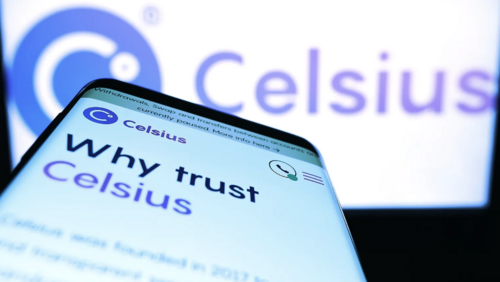

Celsius is a cryptocurrency lending company. Image: Shutterstock
Bankrupt crypto lender Celsius used Quickbooks to keep track of its finances, a court-appointed examiner wrote in a report released Tuesday.
That made it especially challenging to assess the company’s finances post-bankruptcy, as Quickbooks is “geared mainly toward small and medium-sized businesses,” wrote Examiner Shoba Pillay.
Celsius’s finances were tracked across its various divisions in 1
5 separate Quickbooks files, Pillay wrote, without automatic systems in place to produce consolidated statements for the crypto lender that currently owes clients and creditors $5.5 billion.
The use of Quickbooks mirrors accounting methods put in practice by bankrupt cryptocurrency exchange FTX under disgraced founder Sam Bankman-Fried, a process that’s been criticized by the company’s new CEO John Ray III as highly disorganized.
"Nothing against QuickBooks. Very nice tool," Ray said before the U.S. House Financial Services Committee in December. "It's not for a multibillion dollar company."
Celsius filed for Chapter 11 bankruptcy in July of last year after it had paused customer withdrawals and swaps the month before. The lender had offered its customers interest payments on deposits of crypto that were lent out to clients but stopped following the collapse of Terra.
While the lender sustained only a $30 million loss on its $990 million in holdings of Terra's UST stablecoin, an apparent loss of confidence in Celsius’s ability to cover customer deposits sparked a run on the lender weeks later, Pillay wrote.
In the two days prior to Celius’s move to pause withdrawals, the lender received $428 million in withdrawal requests and its liquidity had run dry, according to excel files reviewed by the examiner, and the liquidity crunch was amplified by a precipitous decline in Celsius’s CEL token.
Consolidated financial statements are used by businesses to gain an overall assessment of their financial health across multiple divisions, but Celsius only started producing them in the second quarter of last year and did so manually, the examiner wrote.
While the examiner had requested access to Celsius’s Quickbooks account on Nov. 30, Pillory wasn’t granted access to the statements until over a week later, and certain figures didn’t line up.
As Pillay began piecing together Celsius’s finances, the examiner found “significant discrepancies” between account balances in the Quickbooks files downloaded from Celsius’s account and those used to create consolidated statements put forward by the lender.
The court examiner later found the “files produced by Celsius were not the original files used to prepare the consolidated financial statements” but were rather created by Celsius to satisfy Pillay’s requests for information. “Celsius retroactively prepared consolidation files from its historical accounting records,” the report alleges.
Celsius told the examiner it was ultimately unable to produce the original figures used in creating financial statements for the second quarter of 2022 and 2021, causing Pillay’s depiction of Celsius’s books to differ in certain areas as the timing of entries was adjusted.
“For example, several entries in the QuickBooks general ledger are dated as of the last day of the respective quarters but were not included in the balances on Celsius's summary financial statements,” Pillory wrote.
The examiner’s report found issues with Celsius that date as far back as at least 2020, showing the lender took on hefty loans at one point to keep its business afloat and managed to lose money while cryptocurrencies were booming as well.
